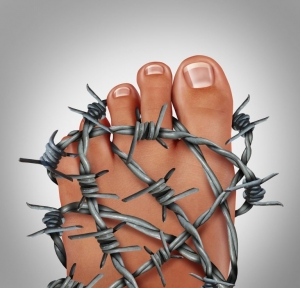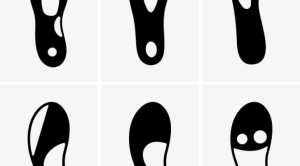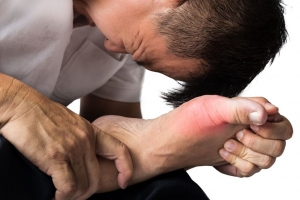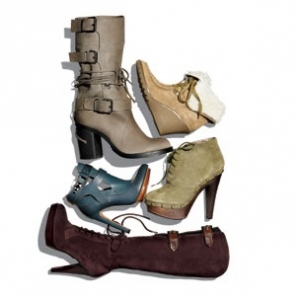Connect With Us
Blog
Displaying items by tag: Long Beach Podiatrist
What is Cellulitis
Understanding Cellulitis
Cellulitis is a very common form of bacterial infection which can cause redness, swelling, and a warm sensation under the skin. It appears on the lower legs, although it can also appear on other areas of the body and face as well.
If left untreated, Cellulitis can quickly turn from an infection to an abscess, or even a much more serious illness called Necrotizing-Fasciitis, or Flesh Eating Disease.
In 2013, roughly 37 million cases of Cellulitis were reported worldwide, with an estimated 30,000 deaths resulting from complications related to this infection.
Causes of Cellulitis
Cellulitis usually occurs when streptococcus or staphylococcus bacteria enter the body through an abrasion or cut. Those at particular risk are the elderly and those with pre-existing immune-deficiency conditions such as diabetes.
Owing to the decreased blood flow inherent with diabetes and other immune deficiencies, the bacteria, upon entering the body, are able to reproduce much quicker, making the condition much more aggressive.
However, it’s not just diabetes and immune-deficiencies which can lead to Cellulitis. There are many pre-existing conditions which can lead to cellulitis. Some common conditions are spider bites, eczema, Athlete’s Foot and open wounds from tattoos.
Others are more specific to children and the elderly.
Chicken Pox, for example, can leave a child’s skin open to infection. Similarly, bed sores and other abrasions common to the elderly can also lead to infection. Proper cleaning and sterilization of affected areas is always encouraged.
Densely-populated living spaces such as dormitories, hostels, retirement homes and shelters are common breeding grounds for Cellulitis. As with Athlete’s Foot and other highly contagious conditions, it can easily be transmitted through shared contact with hygienic facilities. Preventative measures like shower shoes and proper toweling-off are always recommended.
As this is an infection, it can spread quite easily through the bloodstream and into the lymphatic systems. It is extremely important that Cellulitis be treated early to avoid much more serious infections. Symptoms of infection include fever, chills, nausea and fatigue. Increased redness and swelling around the infected area are also common.
A diagnosis of Cellulitis can easily be made by a qualified health professional, like Dr. Vikki and the team at Superior Foot & Ankle Care Center. Obtaining a proper and timely diagnosis is crucial. The longer it is left untreated, the more likely it will develop into something much harder to treat.
Treatment for Cellulitis
Antibiotics are the most common approach to Cellulitis. Similar to other streptococci-caused illnesses like Strep Throat, It tends to clear up within the first week of antibiotic usage. However, for those on antibiotics who do not see improvement, additional measures may be required.
In some cases, Cellulitis will lead to an abscess. Abscesses are large, swollen areas with dark centers, which generally require surgery to drain. Any at-home attempts at drainage can lead to further complications.
Pain relief medication is often prescribed along with antibiotics. However, if the pain is extreme, medical help should be sought out as soon as possible as this may be a sign of developing Necrotizing-Fasciitis—a very aggressive infection which can lead to permanent disfigurement or death.
The preventative measures favored by Dr. Vikki and the team at Superior Foot & Ankle Care Center can help to prevent Cellulitis, and to cure any offshoot conditions.
As an active participant in the well-being of Special Olympians since 2003, Dr. Vikki understands the value of a proper diet and exercise in the prevention and treatment of Cellulitis. Excess blood sugars, like the kind that result from an improper diet can lead to increased bacterial spreading, which can exacerbate any stages of the condition.
Consult Superior Foot & Ankle Care Center
Along with a sound assessment, the staff at Superior Foot and Ankle Care can provide the educational tools necessary to prevent and treat Cellulitis.
Whether you have questions about an existing condition, or you’d simply like to learn more about how you can prevent this infection and other related health issues, schedule a consultation today with the professional team at Superior Foot and Ankle Care Center and start living healthier.
Morton’s Neuroma | What you can do
What Is Morton’s Neuroma?
Unlike most neuromas, Morton’s Neuroma is not a tumor. It is a benign build-up of tissue surrounding a nerve, which can cause pain and discomfort. Many people describe it as the sensation of having a rock in their shoe, while others describe it as a painful burning or numbing sensation upon bearing weight.
The sensations are most often triggered on the ball of the foot between the third and fourth toes. Even the smallest amount of weight pressing down on the foot can cause discomfort.
On a microscopic level, deterioration of the affected nerve can be detected, though there are usually no abnormalities visible to the naked eye. Dr. Vikki and her team at the Superior Foot & Ankle Care Center can not only provide a sound diagnosis, they can provide the level of care required to dramatically increase patient comfort and mobility.
Causes of Morton’s Neuroma
Morton’s Neuroma is often linked to wearing high heels, as well as to various forms of exercise. Women and runners are most likely to suffer from it due to the confining nature of high heels and running shoes. Existing issues such as hammertoes or bunions can also cause or exacerbate the condition.
Symptoms tend to appear slowly, beginning most often with pain upon wearing restrictive footwear. Removing the constrictive footwear should alleviate the symptoms temporarily, especially in conjunction with mild massaging, but overtime the symptoms will worsen, lasting for up to several weeks.
As the condition continues to develop, the damaging effects of the neuroma will become less and less reversible. Early action is the best defense against permanent pain and discomfort. The earlier the diagnosis, the more likely that more invasive treatment such as surgery can be avoided.
Treatment for Morton’s Neuroma
Many conditions can present similar symptoms to those of Morton’s Neuroma. Only a professional, highly skilled team like the professionals at Superior Foot & Ankle Care Center can identify the source of the problem and provide the proper treatment.
The most common treatments are corticosteroid injections and orthotics, but various other forms of treatment exist including radio frequency ablation and Sclerosing alcohol injections.
While non-invasive methods of treatment are more common, in some cases, surgery is required. A neurectomy is performed where the affected tissue is removed. In recent years, ultrasounds have become instrumental in diagnosing Morton’s Neuroma, and in assisting with treatments.
There are no effective at-home cures for Morton’s Neuroma. But there are a few things you can do to help alleviate some of the symptoms:
- Insoles are a good place to start. Custom-fitted insoles can help to alleviate the symptoms by taking weight off of the affected areas. They are only effective on symptoms, but they can provide quick relief.
- Applying an ice pack to the affected area can cut down on the swelling and provide a soothing sensation when the pain is most acute.
- A proper diet is key when dealing with issues like Morton’s Neuroma. As neuromas are triggered by weight distribution, lessening the amount of weight your feet have to bear is always a good place to start.
- Cutting back on physical activity can help to slow the progression of the condition.
- Purchasing more supportive footwear with wider toe boxes and lower heals can help to remove pressure from the balls of the feet.
- Finally, basic over-the-counter anti-inflammatory medications such as Ibuprofen can help to alleviate the pain.
While these methods can help to alleviate the symptoms, however, they cannot attack the actual issue, which is the thickening around the nerve tissue.
Contact Dr. Vikki Today
With the resources of a renowned podiatry clinic, as well as the preventative measures favored by the staff at the Superior Foot & Ankle Care Center you can find both relief and the tools necessary to prevent future issues. Don’t waste another day in pain.
Schedule an appointment today to talk to the well-renowned team at Superior Foot & Ankle Care center, and get back on your feet.
Changing Your Shoes for the New Season
It is very important to have shoes that have just the right amount of arch support, particularly for those who transition into boots during the winter time. Seasonal Footwear all have their own unique support issues. Most boots lack the cushion and support that sneakers have while summer sandals do not provide proper ankle support.
Wearing appropriately-fitted shoes is a key part of keeping your feet healthy and in working order. You need shoes with good arch support and stable shoes, but it can be difficult to find the footwear that provides the best orthopedic fit for your feet. Without proper arch supports you leave yourself open to developing pain in your heels, ankles, knees and even lower back.
Dr. Foley and Dr. Ornelas of Superior Foot & Ankle Center have compiled a list of shoes and shoe retailers that are best suited to prevent a variety of foot-related injuries and issues. This list separates shoes by athletic categories, such as running, cross-training, basketball, hiking and golf. To avoid these problems you should always find shoes that have just the right amount of arch support or else wear orthotic insoles.
Here’s some information about what orthotics are and what different kinds are available.
What are Orthotics?
Orthotics are inserts that correct a number of foot-related problems from flat feet to heal pain. While they do not fix any major biomechanical problems with your feet, they do provide relief for minor aches and pains.
Over the Counter Orthotics
There are a number of different kinds of over-the-counter orthotics that treat minor foot problems and alleviate pain. For example, arch supports can help correct fallen arches or flat feet while gel inserts help relieve foot and heel pain.
Prescription Orthotics
If you find that over-the-counter orthotics are not alleviating your pain, and it is best to consult a foot care professional about getting prescription orthotics. Prescription orthotics are high-quality inserts that address your specific foot care needs. These custom orthotics correct any number of serious foot problems from plantar fasciitis to abnormal motion. In addition, custom orthotics can relieve severe pain in your feet, knees, shins and back. They can even be used to help diabetic treat their painful foot ulcers and calluses. Prescription Orthotics are created by taking a mold or scan of your feet, so you know that your individual foot issues are being addressed.
Other Things You Should Know
You can find orthotics that are designed to fit and work inside high heel shoes.
Because over the counter orthotics can take a while to break in it is best to wear them around the house for a few days before wearing them to work. Many shoe brands come with extra padding and support. For example Cole Haan dress shoes and boots all come with Nike Air inserts.
Over the counter inserts can last anywhere from 3 months to a year, depending upon how much standing and walking you do at your job. For this reason, people with jobs that require a lot of standing and walking such as nurses and waitresses should have a spare pair of inserts just in case.
Now that you know the importance of having proper foot support in all of your shoes no matter what season it is, be sure to use orthotics to correct and prevent pain. If you are experiencing foot pain, no matter how minor, it is important to speak to a foot care professional as soon as possible to discuss ways to correct this issue. If you have any questions about orthotics; please feel free to contact us today to schedule a consultation.
Does Your Foot Pain Signal a Serious Condition?
You might be surprised to learn that many diseases have foot pain as one of their symptoms. Problems with the thyroid can cause nerve sensations in the feet; or degeneration in the lower back might irritate the nerves of the spine, impeding sensation in the feet. Learning what signs to look for could improve your life or even save it.
Peripheral Arterial Disease (PAD)
PAD occurs when plaque – a fatty substance which builds up in the arteries in the legs – reduces blood flow to the lower legs and feet. Symptoms include cramping in the calves, or other parts of the leg while it is in motion. It may even cause foot pain, or prevent wounds in the foot from healing properly.
While the most obvious symptoms of PAD involve the legs, it is associated with hidden damage to the heart and brain. This means that PAD sufferers are at a higher risk of heart attack and stroke. Smoking, diabetes, high cholesterol, and high blood pressure will also increase the risk of PAD. Medications may be prescribed, but diet and lifestyle changes are also necessary.
Rheumatoid Arthritis (RA) and Gout
The Arthritis Foundation revealed that 46 million Americans have arthritis or other chronic joint problems. Of the 1.3 million Americans who suffer from rheumatoid arthritis, 90 percent of them will experience symptoms in their foot and ankle.
RA develops when the body’s immune system mistakenly attacks the joints, causing pain and swelling. If RA reaches the feet, pain will begin in the toes, and then spread to the feet and ankles later on. The joint damage caused by RA can even change the shape of the toes and feet, given enough time. RA treatment involves medication, exercise, and sometimes surgery.
Gout is another type of arthritis caused by the accumulation of uric acid in the body. The acid collects in the joints, especially the big toes, and will cause intense, episodic pain. The acid may even cause kidney stones if it builds up there.
Gout treatment involves exercise, lots of water, avoidance of certain medications, and staying at a healthy weight. Doctors may prescribe gout patients with nonsteroidal anti-inflammatory drugs (NSAIDs), steroids, or other medications.
Diabetes
Approximately 24 million Americans have diabetes, but 6 million don’t even know it. Diabetes is a condition in which glucose, or blood sugar, builds up in the blood. While glucose is necessary to fuel the body, an excess amount will damage nerves and blood vessels in the feet, causing decreased sensation and reduced blood flow.
Other symptoms of diabetes include numbness and tingling in the feet, and severe foot infections. While many people experience foot discomfort after a long day of standing, severe foot pain out of proportion with your activity level is a problem that should be reported to your doctor. Diabetes can lead to other major foot problems as well, and possibly surgical removal of the toe, foot, or lower leg.
Diabetes can be treated with medication and regular foot exams. It also requires lifestyle changes like quitting smoking, and wearing supportive shoes to mitigate foot trauma.
For more information on foot pain or to schedule an appointment, contact Superior Foot & Ankle Care Center.
Why do Bunions Hurt During Colder Weather
Many people who suffer from bunions tell their podiatrist that cold weather makes their bunion hurt worst. There is no evidence that cold weather is what is causing the increase in pain. Rather, foot doctors believe that it is the change in the type of foot wear people use during cold weather that causes the increase in pain.
Most patients seeking bunion treatment are women. During fall and winter, women stop wearing sandals and open-toed shoe styles and start wearing boots and closed-toed shoes. This big change in their footwear can cause irritation to the bunion.
Foot doctor Long Beach recognizes that there is an increase in bunion treatment during cold weather because patients wear shoes that aggravate the joint bursa. Once the joint bursa is aggravated, it becomes red and inflamed, causing the bunion to ache.
Bunions do not go away over time or on their own. Once a bunion forms, it is best to seek bunion treatment from a foot doctor Long Beach. People with bunions will have periods where the bunion does not hurt but over time, the bunion can become irritated and grow. Bunion treatment can be conservative and painless but it is up to the patient to seek treatment. Bunion surgery Long Beach is usually the final answer in safe, permanent bunion treatment.
Women love shoes and during the colder seasons, they seek out stylish boots. Unfortunately, those boots can cause more traumas to the feet. Bunions form on the big toe joint which can be pushed on by tight, ill-fitting, or leather boots. The problems and pain are increased when the boots have a heel. The pain during fall and winter can make some women wish they didn’t have to wear shoes at all.
The pain patients feel from winter style shoes does not just cause more pain now but it can cause bigger bunions over time. Harvard Health Publications urges women to wear the right kind of shoes. If you have a bunion, be mindful of wearing wide shoes with a flexible sole. Heels and boots will not accommodate the bunion and can make mattes much worse.
The bunion surgeon Long Beach patients trust most can discuss your bunion treatment options to begin your road to a bunion pain-free life.
Archives
Categories
- Featured (163)
- Blog (176)
- Ankle Care (6)
- Ankle Condition (2)
- Ankle Pain (0)
- Appointment Tips (2)
- Arch Pain (1)
- Arthritis (10)
- Athlete's Foot (6)
- Blister (1)
- Bunions (7)
- Calluses (1)
- Child Care (2)
- Circulation (1)
- Common Foot Conditions (4)
- Common Foot Problems (3)
- Corns (0)
- Custom Orthotics (1)
- Diabetes (10)
- Diabetic Foot Care (3)
- Diabetic Footwear (1)
- Edema (1)
- Exercise (4)
- Fall Prevention (1)
- Fitness (1)
- Flat Feet (2)
- Foot Care (19)
- Foot Care Safety Tips (3)
- Foot Care Tips (20)
- Foot Conditions (12)
- Foot Facts (3)
- Foot Health (6)
- Foot Odor (1)
- Foot Pain (5)
- Foot Problems (2)
- Foot Safety (1)
- Foot Surgery Tips (2)
- Foot Warts (2)
- Foot Wear (2)
- Fractures (1)
- Fungal Infection (2)
- General Health (0)
- Gout (5)
- Gout Treatment (0)
- Hammertoe (1)
- Health Tips (46)
- Heart Health (1)
- Heel Pain (0)
- Heel Spurs (0)
- Ingrown Toenails (4)
- Interesting Facts (2)
- Joint Pain (2)
- Leg Conditions (2)
- Leg Condtions (0)
- Men's Foot Health (1)
- Metatarsals (0)
- Nail Fungus (2)
- Neuropathy (1)
- Nutrition (2)
- Obesity (2)
- Osteoporosis (1)
- Pain Relief (5)
- Patient Communications (1)
- Pediatric Foot Conditions (5)
- Pediatric Foot Pain (2)
- Pedicure (1)
- Peripheral Arterial Disease (1)
- Plantar Fasciitis (2)
- Podiatrist Appointment (0)
- Pregnancy Feet (3)
- Proper Shoes (2)
- Senior Foot Care (7)
- Shoe Fit (1)
- Skin Cancer (3)
- Sports Injuries (2)
- Spring Foot Health (1)
- Summer Foot Health (2)
- Toe Pain (4)
- Uncategorized (5)
- Varicose Veins (2)
- Walking (1)
- Women Foot Health (3)
- Youth Sports (2)





